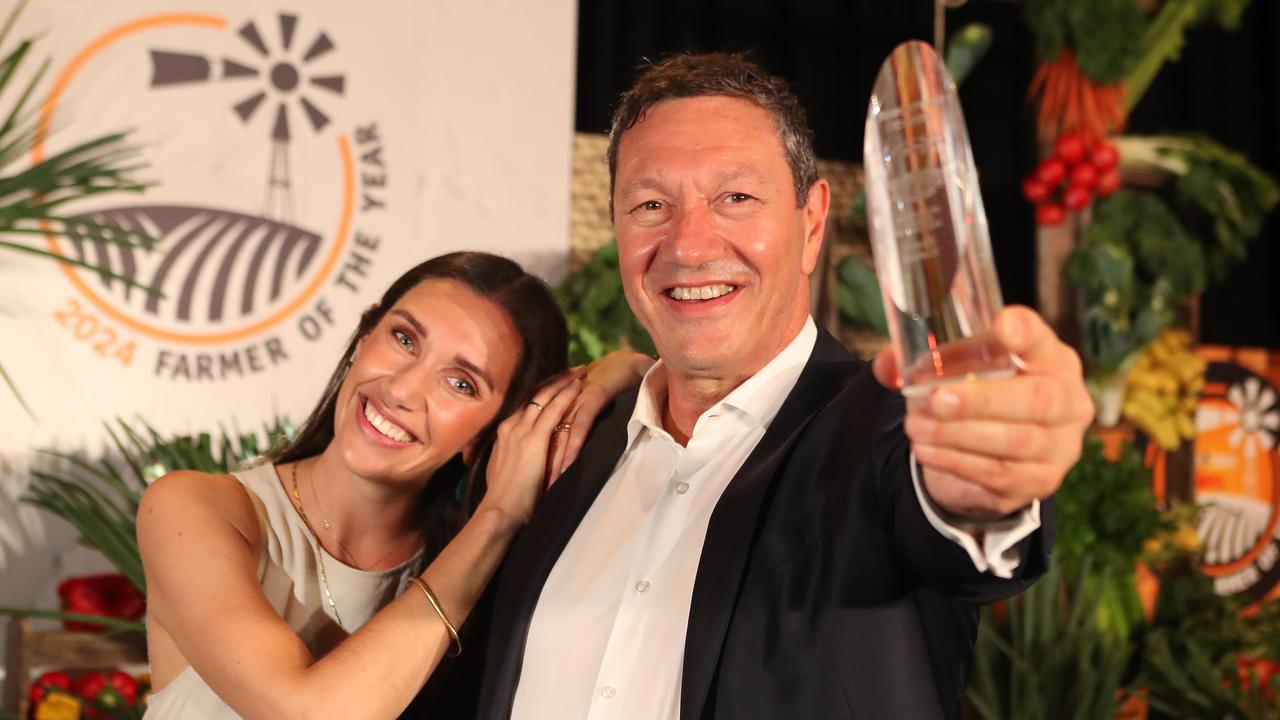Tom Sambell’s mix makes a match at Benayeo in Victoria
EXPERIENCE as an agronomist has helped young farmer Tom Sambell adopt a broader perspective.

TOM Sambell is an agronomist-cum-young farmer with a sharp eye on managing a bunch of diverse enterprises.
His family’s farm is at Benayeo, in far western Victoria, but near the South Australian town of Naracoorte.
In a well-regarded and diverse agriculture region, the Sambell’s business is good example of progressive farming.
Tom and wife Brooke — who have two children, Gus, 3, and Eva, 5, — farm with Tom’s parents, Dennis and Christina, and his brother, David.
Theirs is a true mixed-farming operation with a range of enterprises that is, at times, complex to juggle.
The aim is to make the most productive use of their land, water, and mostly reliable, mild climate.
They have dryland cropping and deep-bore water irrigated cropping, Merino and crossbred self-replacing sheep flocks and also grow small seeds such as sub-clover.
After studying at Longerenong Agricultural College, Tom worked as an agronomist before returning to the farm.
These experiences enriched his farming and gave him a broader perspective, he said.
He has continued to keep connected to other farmers and up to date with the latest technology through his involvement on the MacKillop Farm Management Group committee.

His business is in a growth phase, but he is volunteering time to help the group meet the aims of local farmers.
“It is a great way to network with other farmers and for running locally-relevant trials,” Tom said.
The group now has an increased focus on better integrating cropping and livestock systems, a neat fit as this is also one the challenges the Sambells face.
Tom said many farmers had been able to apply many new technologies to cropping, leading to production gains and efficiencies.
Now the task was to also employ more advanced technology in livestock enterprises, and he said the MacKillop group was a great way to fast-track local knowledge of useful technologies.
“Mixed farmers tend to be very time-poor, so if the group’s trials can work out what is likely to be a good idea, it is more efficient,” he said.
The property — which has 50:50 split between livestock and cropping — receives an annual 525mm of rain.
The Sambells crop about 1000ha annually, including up to 200ha for small seed production, while a “similar area” is dedicated to livestock, Tom said.
Most of the land — made up of a couple of blocks at Benayeo and further south at Apsley — is owned by the family, while some is leased. They have nine centre-pivot irrigators, eight currently equipped.
Crops include canola, wheat, milling oats and beans, as well as feed lupins to use in their sheep-finishing feedlot.
Tom said a good canola yield for the district was about 2.5 tonnes/ha, and wheat, 4-5 tonnes/ha. In the small seeds business they grow sub-clover and lucerne seed.
The 3500-ewe sheep operation is a self-replacing flock, unlike many sheep enterprises in the region where it has become increasingly popular to buy in first-cross ewes.
Tom said they found breeding their own self-replacing flock cost effective and Dennis enjoyed the wool production aspect of Merinos.
The Merino flock has been based on Pooginook bloodlines from the NSW Riverina for the past 30 years and the medium-wool sheep cut 18-21-micron wool.
“Now we’re focusing on growth in our Merinos and are trying some polled rams,” Tom said.
Merinos — accounting for a third of the sheep — lamb in May, with percentages ranging from 80 to 100 per cent.
Merino ewes are mated to Deepwater Border Leicester rams to produce first-cross ewes, which are then joined to Cadnite Poll Dorsets.
In this crossbred flock, lambing percentages have been as good as 150 per cent, but usually average 120 per cent, Tom said.
The crossbred flock lambs in May and shearing follows in August on the home farm and late September at Apsley.
“We’ve been scanning for the last few years and that has been good,” he said.
Sheep are separated into pregnants and non pregnants, but not yet into twinning and single-lambing ewes.
Lambs are marked in June, apart from crossbred ewe lambs, which lamb in late August after shearing. Lambs run on crop stubbles and can be finished in an on-farm feedlot for six to eight weeks. They are sold mainly over-the-hooks to the JBS plant at Bordertown, or through the large selling centre at Naracoorte.
The area the Sambells crop has slowly increased in recent years, but livestock numbers have not decreased. They have just been run more intensively, Tom said.
Crops are usually sown the first week of May.
“It was looking like a textbook season, after a great start, but we are all looking for the next rain now,” Tom said.
The area sown to crop has increased by about 50 per cent in the past 15 years, he said.
Minimum tillage improved the trafficability of paddocks, he said. Before this technique was used, farmers would have trouble getting on paddocks made “soupy” from cultivation
“We don’t have set rotations, but tend to plant canola, wheat, milling oats, then a legume, depending on the soil type either beans, lupins or clover (seed),” Tom said.
With herbicide resistance in weeds a growing concern, Tom is looking at windrowing and burning.
Tom is realistic about the challenges farmers confront.
“The biggest challenge to farming successfully in our region will be trying to stay profitable,” he said. “A successful mixed farmer to me is someone who is well organised and can get the timing of operations right in their various enterprises.”


